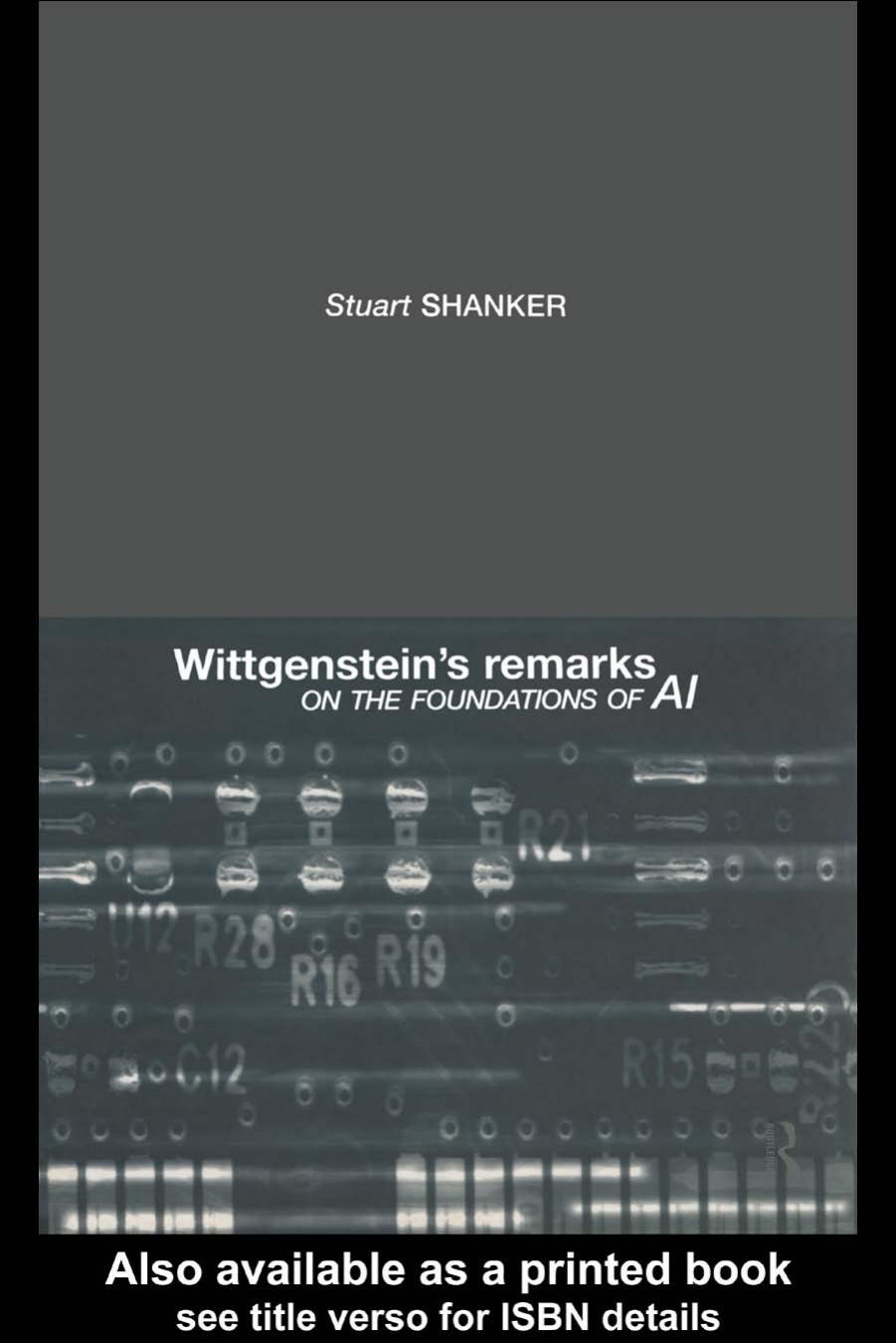Wittgenstein's Remarks on the Foundations of AI by Stuart Shanker

Author:Stuart Shanker [Shanker, Stuart]
Language: eng
Format: azw3, pdf
Tags: ebook, book
Publisher: Taylor and Francis
Published: 2002-01-31T05:00:00+00:00
§4 GPS and the assault on ‘insight’
The task facing Newell and Simon was clear: if problem-solving is to be treated as the paradigm of thinking—or indeed, the core of all thinking—and if the atomic steps of a program must be such that they presuppose no intelligence, then neither can they presuppose insight. Yet the creativity and originality characteristic of thinking must somehow emerge from a program if it is to simulate human problem-solving. Hence Newell and Simon had to establish that ‘novelty in problem solving comes about through ordinary thought processes in interaction with the information available in the problem’, and that ‘there is no need to postulate a special process called insight’ (Weisberg 1988:155–6). In other words, Newell and Simon had to establish that there is nothing particularly creative about creativity: at least, not in the sense that we’ve been led to expect by Romantic myths.
Underlying Newell and Simon’s view of problem-solving is a Darwinian picture of how the hominid brain evolved from the small organ possessed by Australopithecus afarensis—which must have had quite limited problemsolving capabilities—to the large and powerful brain of Homo sapiens. As Simon puts it, ‘A human being is able to think because, by biological inheritance and exposure to a stream of experience in the external world, he has acquired a program that is effective for guiding thought processes. If we wish to seek an efficient cause for his behavior, it lies in that program in its interaction with ongoing stimuli’ (Simon 1966a: 283). On this picture, the development of the hominid brain should not simply be seen in terms of size, or even of the enlargement of certain higher-order structures (such as the pre-frontal cortex). Instead, it should be seen as an evolution in the information-processing design of the primate brain. Organisms which, perhaps because of some mutation, acquired a more effective problem-solving program than their conspecifics would have bestowed a selective advantage on their offspring. Whether this process occurred gradually, or was one of ‘punctuated equilibrium’, it must have been the case that information-processing mechanisms which rely on fundamental heuristics to assign weightings were built up over the span of five million years.
The notion of informational complexity does not in itself, however, entail a computational view of cognitive heuristics. In order to get to the AI analysis of creativity, Newell and Simon had to introduce a quite specific picture of problem-solving as
Download
Wittgenstein's Remarks on the Foundations of AI by Stuart Shanker.pdf
This site does not store any files on its server. We only index and link to content provided by other sites. Please contact the content providers to delete copyright contents if any and email us, we'll remove relevant links or contents immediately.
| Anthropology | Archaeology |
| Philosophy | Politics & Government |
| Social Sciences | Sociology |
| Women's Studies |
The remains of the day by Kazuo Ishiguro(8729)
Tools of Titans by Timothy Ferriss(8138)
Giovanni's Room by James Baldwin(7103)
The Black Swan by Nassim Nicholas Taleb(6936)
Inner Engineering: A Yogi's Guide to Joy by Sadhguru(6624)
The Way of Zen by Alan W. Watts(6442)
Asking the Right Questions: A Guide to Critical Thinking by M. Neil Browne & Stuart M. Keeley(5569)
The Power of Now: A Guide to Spiritual Enlightenment by Eckhart Tolle(5522)
The Six Wives Of Henry VIII (WOMEN IN HISTORY) by Fraser Antonia(5343)
Astrophysics for People in a Hurry by Neil DeGrasse Tyson(5087)
Housekeeping by Marilynne Robinson(4243)
12 Rules for Life by Jordan B. Peterson(4214)
The Ethical Slut by Janet W. Hardy(4141)
Double Down (Diary of a Wimpy Kid Book 11) by Jeff Kinney(4124)
Skin in the Game by Nassim Nicholas Taleb(4118)
Ikigai by Héctor García & Francesc Miralles(4035)
The Art of Happiness by The Dalai Lama(4002)
Skin in the Game: Hidden Asymmetries in Daily Life by Nassim Nicholas Taleb(3863)
Walking by Henry David Thoreau(3848)
